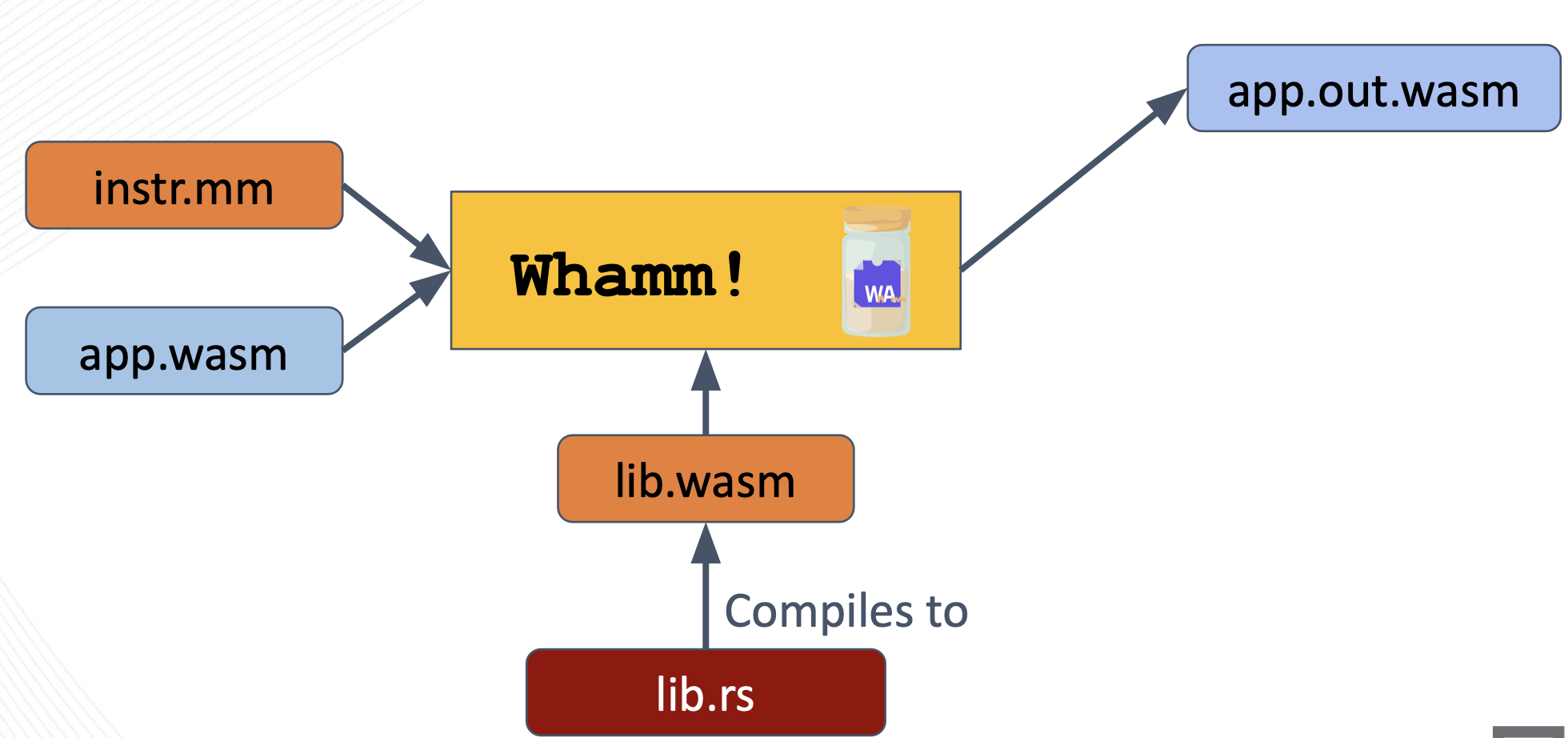Injection Strategies
Debugging and profiling programs are an integral part of engineering software. This is done through instrumenting the program under observation (inserting instructions that provide insight into dynamic execution).
The most-common instrumentation techniques, such as bytecode rewriting, inject instructions directly into the application code. While this method enables instrumentation to support any application domain, it intrudes on the program state space (possibly introducing bugs), complicates the implementation, limits the scope of observation, and cannot dynamically adapt to program behavior.
Instead, one can remedy these issues with bytecode rewriting by interfacing with a runtime engine that directly supports instrumentation. This technique can bring powerful capabilities into play as demonstrated by the Wizard research engine, in the ASPLOS paper Flexible Non-intrusive Dynamic Instrumentation for WebAssembly. This paper demonstrated how to build instrumentation support that protects the application-under-observation, provides consistency guarantees to enable composable tooling, applies JIT optimizations specific to instrumentation that make some tools run even faster than bytecode rewriting, and more. However, this technique is not as widely-used as bytecode rewriting since it limits a tool's scope to applications that can run on such engines.
This is where Whamm comes in.
This DSL abstracts above the instrumentation technique to enable developer tooling to support a broad domain of applications while leveraging runtime capabilities as-available without reimplementation.
With Whamm you can write instrumentation once and support wide domain of apps.
Use engine instrumentation capabilities as available.
Use bytecode rewriting to support everything else.
Bytecode Rewriting

When this strategy is used, the target application bytecode must also be provided to the Whamm compiler.
To perform the bytecode rewriting injection strategy, Whamm leverages the wirm Rust library.
This library loads the app.wasm module into an AST representation that can then be traversed and manipulated to directly inject the instrumentation into the application's bytecode.
Read more about the low-level details in the developers documentation.
The now-instrumented application is output as a new Wasm module, as shown above (app.out.wasm).
Direct Engine Support (wei)##

Users may also target an engine that directly supports instrumentation via the interface used by Whamm.
Currently, the only Wasm engine that does this is Wizard.
You can read about Wizard's instrumentation capabilities in the ASPLOS paper: Flexible Non-intrusive Dynamic Instrumentation for WebAssembly.
The Whamm compiler generates a Wasm module that encodes instrumentation in a generic way, it is not directly tied to an application's bytecode.
Read the developer's Engine Target documentation for more information on how this works if interested.
Note, when using this strategy, the target application's bytecode is not provided to the Whamm compiler.
This is because the engine finds the appropriate instrumentation injection points in the application and attaches the appropriate callbacks at application runtime.
Thus, the app.wasm is provided as a "co-module" (meaning a Wasm module that is directly connected to its supporting instr.wasm) to the engine at runtime.